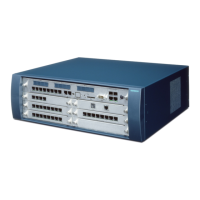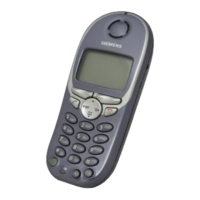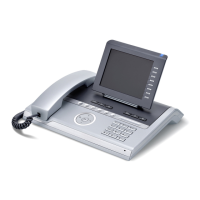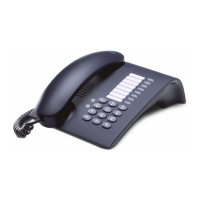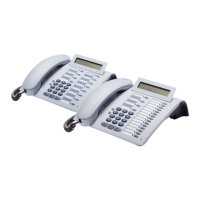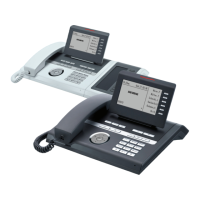Why can't I dial a phone number on my Siemens HiPath 500 Telephone?
- DDanny RodriguezAug 27, 2025
If you are unable to dial a phone number on your Siemens Telephone, the handset might be locked. Try unlocking the handset.
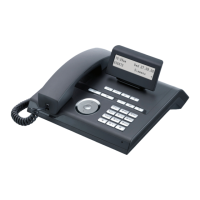
Why can't I dial a phone number on my Siemens HiPath 500 Telephone?
If you are unable to dial a phone number on your Siemens Telephone, the handset might be locked. Try unlocking the handset.
What to do if my Siemens Telephone doesn't react to keystrokes?
If your Siemens Telephone isn't responding when you press a key, it could be that the keypad lock is activated, or the key is stuck. Try pressing the Hash key until you receive confirmation. Also, make sure the key is not physically stuck.
How to fix a Siemens Telephone with no display?
If your Siemens Telephone display is blank, it could be due to the handset not being switched on or the battery being empty. Try pressing the On-hook key until you receive confirmation. If that doesn't work, charge or replace the battery.
Key safety warnings and important usage notes for the telephone.
Information on CE conformity and environmental disposal marks.
Detailed description of the telephone's control panel and its keys.
Guide to understanding symbols, navigation, and step-by-step instructions.
Explanation of information shown on the graphics-enabled touchscreen display.
Methods for accessing and selecting telephone functions interactively or via menus.
Explanation of the two main connection types and their implications.
Description of basic, enhanced, team, and graphic interface functions.
Guidance on saving numbers, using directories, and the callback feature.
Procedure for answering calls using the handset or speakerphone.
Information on receiving and handling incoming calls while already on a call.
Procedures for rejecting calls and accessing voice messages.
How to enable or disable the Do Not Disturb feature to block incoming calls.
Off-hook, on-hook dialing, and en-bloc sending procedures.
Managing caller ID display and making loudspeaker announcements.
Using DTMF signals and automatic call connection (hotline).
Reserving trunks and using dialing aid features.
Using dialing aids for number dialing and call setup.
How to add a second party and conduct multi-party conferences.
Checking, removing parties, and leaving/ending conferences.
Procedures for transferring calls and parking/retrieving them.
How to place external calls on hold and retrieve them.
Redialing numbers and managing the caller list.
Dialing from internal, personal, and LDAP directories.
Programming and using repertory and speed-dial keys.
Viewing call charges for the current or all conducted calls.
Assigning external calls to specific projects using account codes.
Storing and answering callbacks when a line is busy or unanswered.
Handling call waiting (camp-on) and busy override functions.
Adjusting ring volume, tone, attention ring, and speakerphone acoustics.
Selecting operating language and adjusting display angle.
Locking the phone and managing personal identification numbers (PIN).
Programming keys with station numbers, functions, and procedures.
Testing phone functions and verifying key programming.
Variable call forwarding, no reply, and night answer configurations.
Sending messages, leaving advisory messages, and using other features.
Managing calls and lines using trunk keys within a team.
Direct calling and answering calls using DSS keys for team members.
Transferring calls, joining/leaving group calls, and executive/secretary functions.
Turning group call on/off and managing ringing groups.
Logging on/off, managing work time, and night service for UCD.
Leaving hunt groups or group calls and managing multiple groups.
Activating/deactivating call forwarding for telephones on other platforms.
Configuring night answer and ringing groups over LAN.
Controlling relays and activating door openers using LAN functions.
Table mapping menus to functions and their descriptions.
Comparison of display texts for different HiPath versions.
Overview of the main display menu and its application icons.
Managing contacts, saving numbers, and dialing from the personal directory.
Accessing and searching the company's central directory.
Accessing intranet information and configuring WAP browser settings.
Installing and using Java applications for extended phone features.
Adjusting display contrast, calibration, language, and password settings.
Introduction to the alternative GUI and its navigation elements.
Managing contacts and dialing in the alternative GUI.
Accessing and searching the corporate directory using basic and advanced search.
Using the WAP browser and managing favorite WAP addresses.
Installing, searching, and deleting Java applications.
Customizing display contrast, screen lock time, and password.
Operating the phone using an external keyboard or PC connection.
Methods for entering characters using the keypad and navigating lists.
Steps to export Outlook contacts to a CSV file for import.
Mapping Outlook data fields to personal directory fields for export.
Options for labeling telephone keys with functions or call numbers.
Information on accessing operating instructions and available accessories.
Cleaning the phone, addressing common issues like key response and ringing.
Interpreting and resolving common error messages displayed on the screen.
Procedures for restarting the phone and seeking support.
List of functions activated directly via interactive menus.
Functions activated using the Program/Service menu and specific codes.
Functions that can be activated by pressing dedicated function keys.
